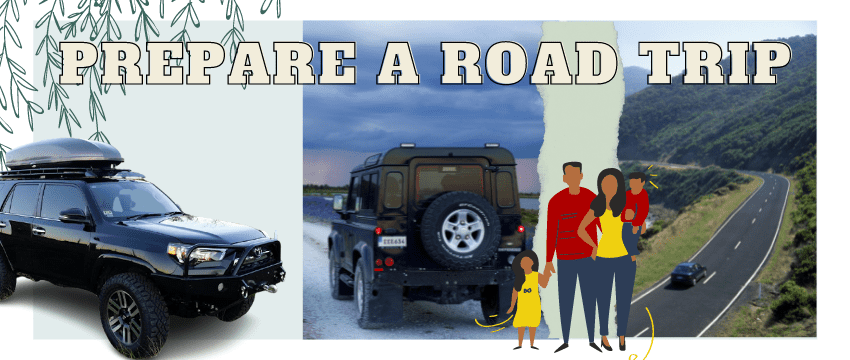Hey road tripper! If you’ve ever cruised down the highway, you know the right cargo carriers or organizers can be total game-changers. Think about it—ever tried cramming luggage, snacks, and hiking gear into a tiny trunk? Sucks, right? The right gear doesn’t just save space; it keeps your sanity intact. But what exactly should you toss in your ride? I get it—packing feels like guessing what’ll blow up next. Snacks under the seat? Chargers buried somewhere? Let’s skip the chaos and talk essentials that’ll keep your trip smooth and Instagram-worthy.
Before you blast that playlist, though, let’s chat about your car itself. Ever been stranded because your battery decided to peace out mid-trip? For real, it’s the worst. Give your tires, fluids, and brakes a quick once-over—most of us skip this, but why risk it? And hey, toss in a roadside emergency kit. Old school? Maybe. Lifesaver when you’re changing a flat at midnight? Totally. How’s it going to feel if you’re stuck without jumper cables? Not chill. A little prep saves you from becoming that person waving for help on the shoulder.
Now, onto the fun stuff. Yeah, you need a phone mount and a first-aid kit, but what about a cozy blanket for picnic stops or a portable charger that can juice up your laptop? Game. Changer. Traveling with kids? Snacks and wet wipes aren’t optional—nice try thinking you’ll survive without ’em. And off the top of my head, a reusable trash bag keeps your ride from smelling like a fast-food dumpster. Road trips are about adventure, right? Mix the practical with the “heck yes” extras, and you’re golden. Who knew being prepared could feel this legit?
Ever feel like you’re drowning in routine? Road trips are your escape hatch—no fancy resorts needed, just you, your crew, and the open road. Seriously, what’s better than blasting tunes, punching random spots into Google Maps, and discovering hidden gems you’d never find on a rigid itinerary? It’s not just about snapping pics of cool landscapes (though, fair enough, those sunsets are fire). Road trips force you to vibe with your people—like, really vibe.
You’re stuck in a car for hours, arguing over snacks and wrong turns, but guess what? That’s where the magic happens. Ever notice how solving a “are we lost?” crisis bonds you faster than ten family dinners? And let’s be real—friendships don’t get stress-tested harder than when you’re sweating through a flat tire in ninety-degree heat or laughing your butt off at a roadside dinosaur statue. Yeah, there’s chaos—misery loves company, right?—but those “remember when…” stories? Pure gold. Who needs a rigid plan when detours lead to hole-in-the-wall diners with pancakes that’ll ruin brunch forever? Sure, someone’s gonna hog the aux cord, and someone else will forget the charger (nice try, buddy), but isn’t that the point? It’s messy, unpredictable, and legit unforgettable. How else do you turn “ugh, Mondays” into “wait till you hear what happened…”?
You can follow the guide below to prepare for a road trip like a pro:
What do you need to check before starting a road trip?
Maintain the Tire Pressure
Ever wonder why your gas tank’s always empty? If your tires are even 10% low on air, you’re wasting 3% more fuel—overinflate them, and you’re still burning 2% extra. For real? Yep. But here’s the good news: checking your tire pressure takes seconds and saves cash. Think of your tires like your car’s shoes—they’re the only part slapping the pavement, so keeping them pumped means better grip, fewer skids, and way less “why’s my ride wobbling?!” panic.
Let’s get real: tires crave air like you crave coffee. Every 3,000 miles or so—or monthly if you’re grinding mountain roads—give ’em a check. Cold winters or scorching summers? Pressure drops faster than your phone battery at a concert. Your car’s manual usually shouts 32 PSI as the magic number, but peep that sticker inside your driver’s door for the exact digits. Pro move? Scribble it on a Post-It and stick it on your dash. No more guessing games.
Punctures are sneaky little saboteurs—they’re the number one cause of blowouts. A tiny nail today could leave you stranded tomorrow. That’s why tire pros say get a checkup with every oil change. But hey, if you’re feeling brave, fixing a flat ain’t rocket science. Just don’t ignore it—low pressure on a road trip? Your tires will wear out faster than your patience in traffic.
Gas station ritual: after you top off your tank, whip out a tire gauge. Why? Tires leak air like gossip leaks at a family reunion. Drive on underinflated tires too long, and you’re flirting with a blowout—especially at highway speeds. Oh, and check ‘em when they’re cold (aka before you’ve driven more than a mile). Press the gauge into the valve stem—no need to overthink it.
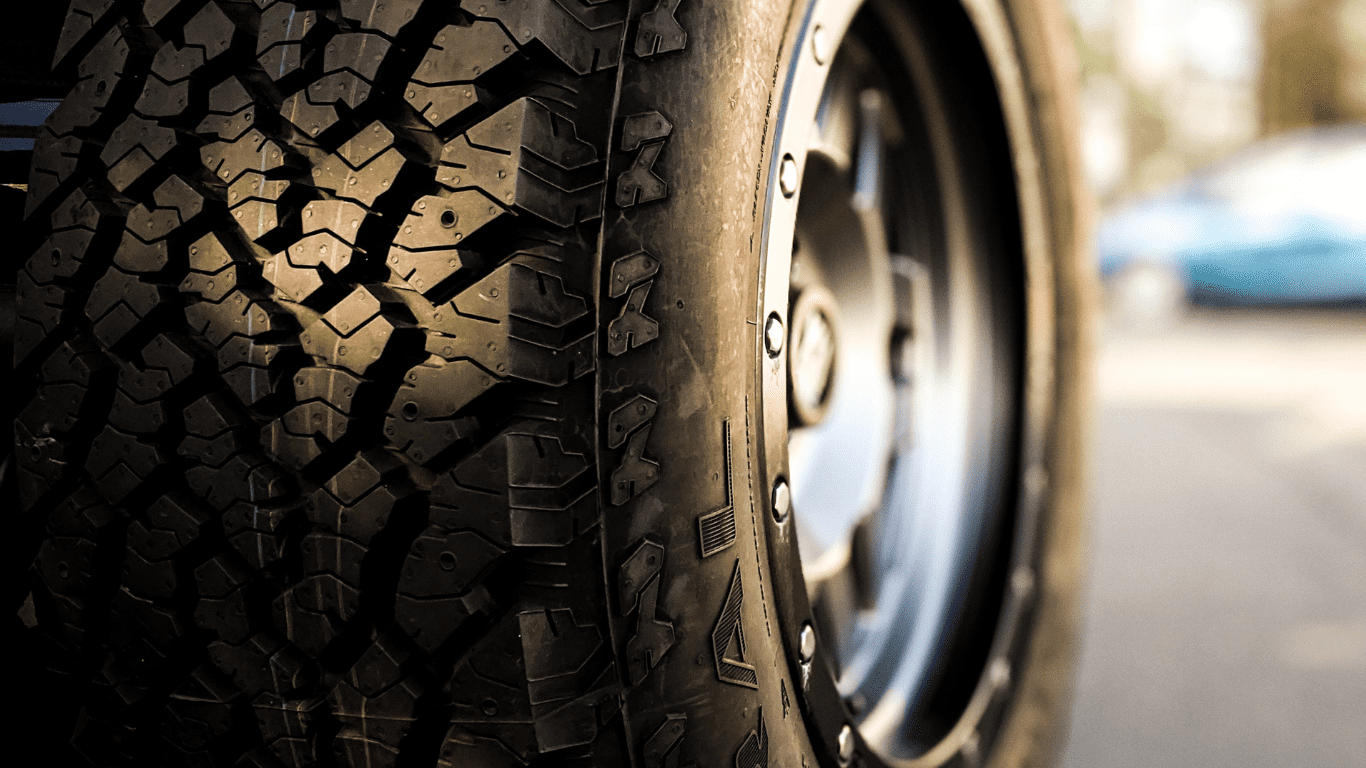
Ever tried eyeballing tire pressure? Nice try, but you’ll end up either underdoing it or overdoing it. Grab a $10 gauge—it’s cheaper than a fancy coffee—and jam it onto the valve stem. PSI (pounds per square inch) is your new BFF here. Write your car’s ideal PSI somewhere obvious, like your glovebox or phone notes. No more “was it 32 or 35?” meltdowns.
Low pressure isn’t just a gas-guzzler—it turns your steering into a wrestling match. Braking feels mushy, and corners get sketchy. Imagine cruising at 60 mph and your tire goes kaput. Not chill. Keep ‘em inflated right, and your ride stays smooth, safe, and way less “why’s my wallet crying?”
Most drivers skip tire checks—until they’re stuck on the shoulder. Don’t be that person. Monthly pressure checks are like brushing your teeth: boring but necessary. Live where temps swing wildly? Check even more. Your tires expand and contract with the weather, so staying on top of it keeps you from blowing cash on replacements.
Tire gauges aren’t just for gearheads. They’re idiot-proof, promise. Pop off the valve cap, press the gauge on, and bam—you’ve got a reading. If it’s low, hit up an air pump (most gas stations have ‘em). Overinflated? Let some air out. Pro tip: Keep a portable compressor in your trunk. They’re tiny, cheap, and lifesavers when you’re miles from a gas station.
Blowouts suck, but here’s the kicker: most are preventable. Underinflated tires overheat, especially on long drives, and boom—you’re stuck. A $10 gauge and five minutes a month could save you a tow truck fee (and a major headache). Plus, properly inflated tires last longer. Who doesn’t want to dodge buying new tires every year?
Still nervous? Your car’s manual has your back. Crack it open—it’ll tell you exactly what PSI your tires need. No manual? Google your car’s make and model. Once you’ve got the numbers, check all four tires (don’t forget the spare!). And hey, if you’re totally lost, ask a buddy or watch a quick YouTube tutorial. No shame—just safer drives.



Maintaining a Vehicle’s fluids
Ever cringe at road gunk splattering your Tesla’s sleek finish? The Zanch 4PCS Mud Flaps for the Model 3 Highland (2024-2025) are like armor for your ride—no more grit, rocks, or salty slush ruining your car’s vibe. These aren’t your grandpa’s clunky mud flaps; they’re slim, tough, and designed to hug your Tesla’s curves without screaming “I’m functional, I swear!” Think about it—how many times have you winced at that ping of debris hitting your paint? With these bad boys, you’re not just protecting your investment—you’re keeping that head-turning aesthetic intact.
Installing these flaps? No grunt work required. Seriously, if you can handle a screwdriver and 20 minutes, you’re golden. They snap into place with factory-matching precision, so no awkward gaps or “why’s this bolt not fitting?!” meltdowns. And hey, they’re weatherproof—rain, snow, or that mystery puddle you accidentally plow through won’t warp or fade ’em. Ever tried cheap flaps that crack after one season? Nice try, but these are built to outlast your obsession with car washes. Plus, the matte black finish? It’s like giving your Tesla a subtle upgrade without shouting for attention.
Worried about aerodynamics? These flaps are wind-tunnel tested, so your range stays chill—no drag drama. And let’s be real, Tesla owners hate compromising style for practicality. Why choose when you can have both? They’re also UV-resistant, so summer sun won’t turn them into brittle relics. Slap ’em on once, forget ‘em, and cruise knowing your car’s shielded from the chaos of the road. Still on the fence? Picture this: your Model 3 rolling clean, mud-free, and looking sharp—while the guy next to you’s scrubbing grime off his fenders. Mic drop.
Brake Fluid
Ever had that heart-stopping moment when your brakes feel…off? Brake fluid’s the unsung hero here—it’s what turns your pedal panic into a smooth stop. But here’s the kicker: leaks are sneaky. No dramatic drips or puddles, just your fluid level dropping like your phone battery on a road trip. For real, how do you even catch that? Peek at your brake fluid reservoir (that little plastic tank under your hood) regularly. If it’s looking low, you’ve probably got a leak brewing. And trust me, you don’t wanna play chicken with corroded brake lines or a spongy pedal.
Okay, let’s get hands-on. Pop the hood and hunt for the reservoir—usually near the back, with a cap labeled “brake fluid.” Twist it open (no grunt work, promise) and check the level against the “Full” mark. See it dipping below? Time to top it off with the fluid type your manual recommends—don’t wing this. Mixing fluids? Big no-no. It’s like pouring soda into your coffee—why would you? And hey, if the fluid’s murky or smells burnt, your system’s begging for a flush. Old fluid attracts moisture, which rusts parts faster than you can say “expensive repair bill.”
Refilling’s a breeze: clean the cap first (dirt in your brake fluid? No thanks), pour slowly to avoid spills, and stop at the “Max” line. Spill some? Wipe it up quick—this stuff eats paint like it’s dessert. Screw the cap back on, and boom—you’re golden. But here’s the thing: if your fluid keeps vanishing, you’ve got a bigger issue. Leaky hoses? Worn seals? Don’t ignore it. Brakes aren’t the place for “I’ll deal with it later” energy.
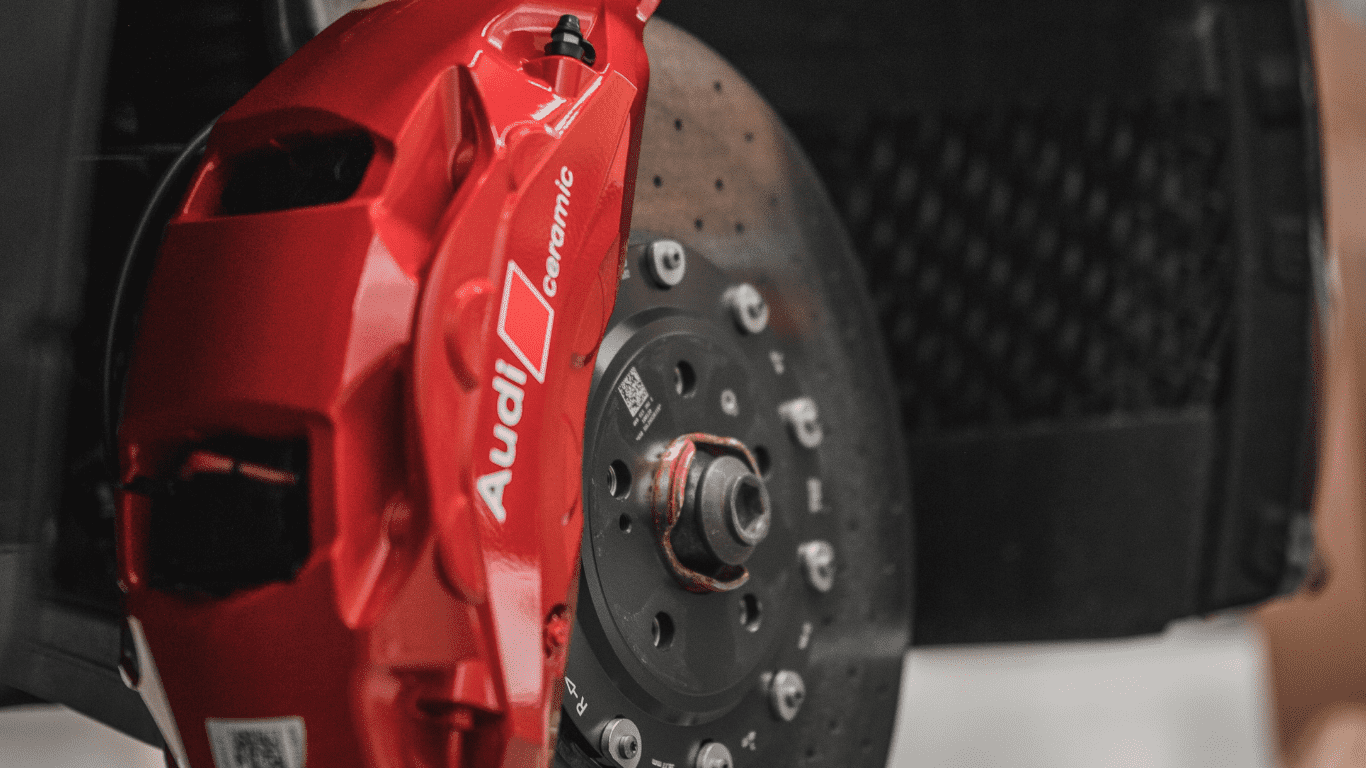
Pro tip: Brake fluid’s not forever. Swap it every 2-3 years or 30,000 miles—whichever comes first. Think of it like replacing toothbrushes: gross if you don’t. And when you do, dispose of the old stuff properly. Dumping it in the gutter? Nice try, eco-villain. Most auto shops recycle it for free. Still nervous? Grab a buddy or YouTube it—no shame in a little moral support. Your brakes (and wallet) will thank you later.
Steering Fluid
Ever cranked the wheel and felt like you’re arm-wrestling your car? That’s your power steering fluid crying for help. This stuff is like your steering’s morning coffee—it keeps everything smooth so you don’t grunt through every turn. But if it’s low or gunky, steering gets stiff, and suddenly parallel parking feels like solving a Rubik’s cube blindfolded. Most manufacturers say check it every 30,000 miles, but your manual’s the boss here—peek there first. And hey, using the wrong fluid? Big mistake. Mixing types is like putting ketchup in your latte—why would you? When in doubt, ask a mechanic. No shame—better safe than stranded.
Here’s the thing: power steering fluid isn’t just oil. It’s special sauce with additives that keep your system from seizing up. Your car’s pump (yep, powered by the engine) shoves this fluid through hoses, creating pressure to turn your wheels effortlessly. But let it run low, and that pump starts gasping like it’s running a marathon. Ignore the whining noise? Congrats, you’re now funding a $500 pump replacement. Sucks, right? Check the reservoir under the hood—look for “PSF” or a steering wheel icon. Fluid should be amber, not sludge-brown. Spot leaks? Puddles under your car or a dripping hose? Nice try ignoring it—fix it before your steering goes full caveman mode.
Fixing a leak or flushing the system? No big deal. Top it off with the fluid your manual shouts about, and wipe spills fast—this stuff eats paint. Flushing? DIY if you’re handy: suck out the old fluid, refill, and turn the wheel lock-to-lock a few times to bleed air. But if you’re sweating bullets, just hit up a shop. Pro tip: Replace the fluid every 2-3 years—old fluid collects moisture, which corrodes parts faster than TikTok trends fade. Still nervous? Grab a buddy or YouTube it. Your steering shouldn’t feel like a workout—keep that fluid fresh, and you’ll glide through turns like you’re on rails.
Transmission Fluid
Ever ignored your transmission fluid like that weird noise your car makes? Big mistake. This unsung hero keeps your gears from turning into a $4,000 metal smoothie. For real—dirty or low fluid fries your transmission faster than TikTok trends. But here’s the kicker: checking it’s easier than assembling IKEA furniture. Crack open your manual—it’ll scream when to flush (usually every 30,000-60,000 miles). Skip it? Congrats, you’re auditioning for “Engine Meltdown: The Sequel.”
Changing fluid sounds intimidating, but no grunt work required. Pop the dipstick (look for “Trans Fluid” under the hood), wipe it, and check the color. Fresh stuff’s cherry red; sludge-brown means it’s binge-watched too many miles. Swap it and the filter—your transmission’s basically getting a spa day. Spot leaks? Puddles under your car or a burnt smell? Nice try ignoring it—fix it before your ride starts shifting like a rusty elevator.
Pro tip: Flushing isn’t just for pros. DIYers can drain old fluid, refill, and cycle gears (park to drive, slowly). Use the fluid your manual obsesses over—mixing types is like putting diesel in a Tesla. Still sweating? Hit up a shop—way cheaper than a new transmission. And hey, check levels monthly if you tow or off-road. Your car’s not a mind reader—give it fresh fluid, and it’ll purr for years. Who knew avoiding bankruptcy could be this chill?
Engine Oil
Ever ignored that oil change light blinking like an angry ex? Here’s the deal: 3,000 miles is the golden rule—your car’s manual isn’t just suggesting it, it’s begging you. Sure, some newer rides stretch to 5,000 or 7,500 miles, but why gamble? Sludgy oil turns your engine into a ticking time bomb, and replacing that costs more than a weekend in Vegas. Pro tip: If you’re hauling trailers, off-roading, or stuck in bumper-to-bumper traffic daily, chop that interval in half. Your engine’s basically doing CrossFit at that point—give it a break.
DIY or shop? Let’s break it down. Changing oil yourself costs half what shops charge—think pizza money vs. steakhouse bills. Yeah, you’ll get grease under your nails, but YouTube’s flooded with tutorials. Search “oil change for [your car model]” and bam—some dude in a garage will walk you through it. No torque wrench? Borrow one or grab a cheapie. But if the idea of crawling under a car makes you sweat, fair enough. Just don’t skip it—your engine’s not into tough love.
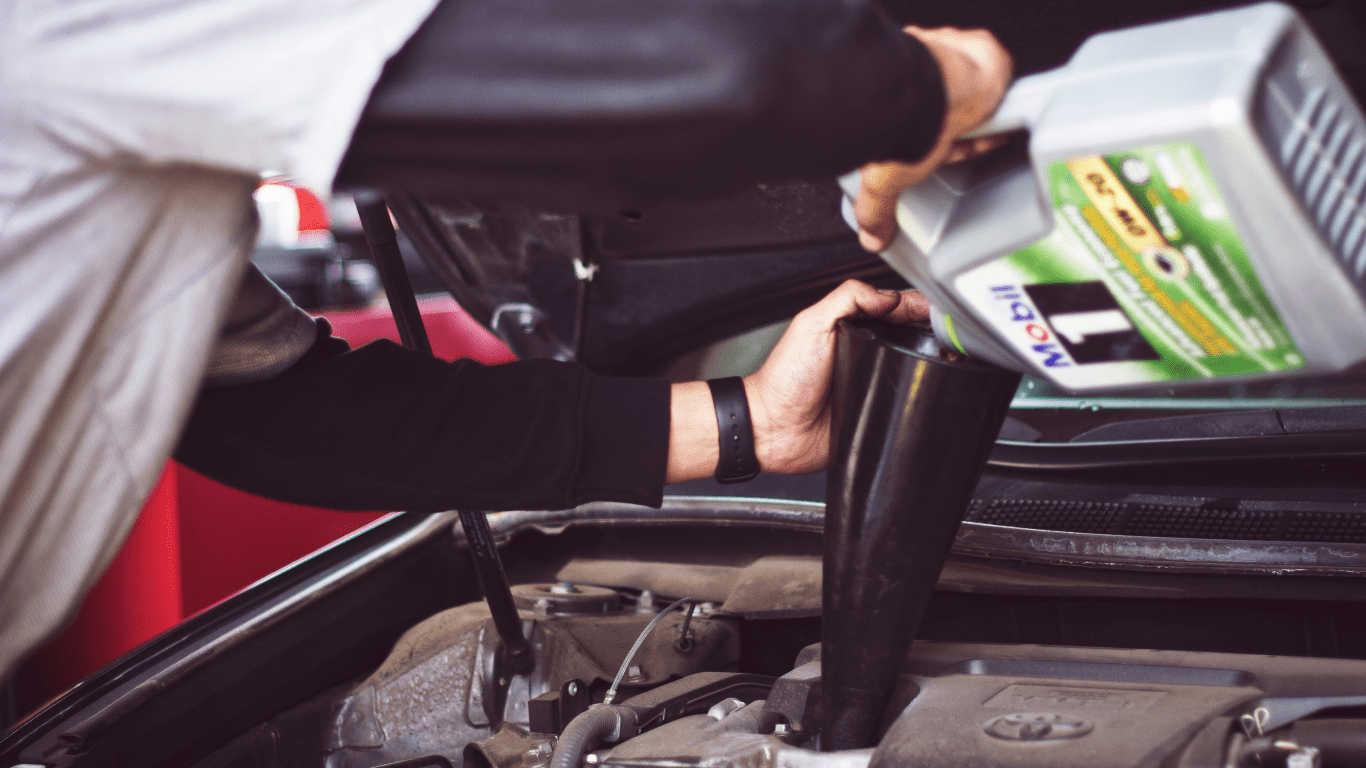
While you’re at it, check tire pressure monthly. Underinflated tires won’t murder your MPG, but they’ll make cornering feel like you’re on roller skates. Find the PSI sticker inside your driver’s door—32-35 is typical—and grab a $10 gauge. Takes two minutes, and hey, no one wants to hydroplane because they were too lazy to check. Bonus: Properly inflated tires wear evenly, so you’re not buying new ones every year.
Oil too old? Here’s your sign: engine noises louder than your kid’s TikTok videos, dark sludge on the dipstick, or a check engine light throwing shade. Fresh oil’s amber and translucent—if yours looks like tar, nice try pushing it further. And always use the grade your manual demands. Mixing synthetic and conventional? No big deal for most cars, but don’t wing it—check first.
Stash a logbook in your glovebox. Jot down dates and mileage for every change—it’s like a diary for your car’s health. Spot a pattern of leaks or weird smells? Time to see a mechanic. Oh, and recycle used oil properly. Dumping it in the trash? Not chill. Auto stores take it for free—no excuses. Keep it simple, stay consistent, and your engine’ll purr past 200,000 miles without a grumble.
Windshield wiper fluid
Ever had that “oh crap” moment when your windshield wiper goes rogue mid-drive? Picture this: you’re pulling into a lot, screeech—the wiper arm flails like a metal octopus, clawing your glass into a spiderweb of cracks. Now you’re stuck with a windshield that looks like it survived a hailstorm, and your key won’t even turn? For real? Guess who’s calling a tow truck instead of making that pit stop. Sucks, but here’s the kicker: that wiper freak-out could’ve been avoided.
In scorching climates, car brains got smart—they slapped the wiper fluid reservoir outside the vehicle. Why? Try refilling it with windows down in a desert breeze. No big deal, right? Wrong. Wind would snatch that fluid mid-pour like a thirsty ghost. Ever tried topping up while cruising with the windows down? Nice try—you’d end up with a dry reservoir and a dashboard full of dust. Hot-country drivers aren’t messing around; easy access means cleaner windshields without playing tug-of-war with Mother Nature.
So next time you’re cursing a busted wiper or a jammed key, remember: design matters. That external reservoir isn’t just a quirky feature—it’s a survival hack. And hey, if your wipers sound like nails on a chalkboard, don’t ignore it. Swap ’em before they go full WWE on your windshield. Still rolling with an internal reservoir in a heatwave? How’s that working out? Maybe it’s time to rethink your setup—or at least pack duct tape.
Test Vehicle Lights
Ever driven at night with a flickering headlight? Not chill. Your car’s lights aren’t just for seeing—they’re for being seen. Blown bulbs or foggy lenses? That’s like rolling dice with safety. For real, how many times have you ignored that dim brake light? Test ’em monthly: headlights, taillights, blinkers. Park in front of a wall at night, flip switches, and walk around—no grunt work needed. Spot a dead bulb? Swap it ASAP. Bonus: clean those lenses with toothpaste (yes, really)—it’s cheaper than new housings.
Your dashboard’s lit up like a Christmas tree? Don’t just slap a sticker over it. Those icons scream everything from “low tire pressure” to “hey, your engine’s about to retire.” Most drivers ignore ’em until the car’s coughing smoke. Pro tip: Grab your manual—decode those hieroglyphics before you’re stuck on the shoulder. And shocks/springs? Worn-out ones turn potholes into rollercoaster drops. Bounce test: push down on each corner—if it keeps wobbling, your shocks are toast.
Here’s the kicker: over 50% of nighttime accidents involve faulty lighting. You’ve seen a fender-bender because someone’s taillight was out—don’t be that someone. Fixing lights isn’t rocket science—YouTube it, or hit up an auto store (they’ll often install bulbs for free). And if your shocks are shot? Your tires wear unevenly, costing you hundreds extra. Ignoring warnings? Nice try—your wallet’ll feel it later. Stay sharp, stay lit, and keep those springs tight.
What Else You Need to Check For A Road Trip:
Air Filter
Ever shrugged off your car’s air filter like it’s just another boring part? Big mistake. Think of it as your engine’s lungs—clog it with dirt, and your ride starts gasping for air. A filthy filter can slash fuel efficiency by up to 10% and turn acceleration into a grumpy sloth. Worse? Imagine debris shooting toward your engine on the highway—no one’s got time for a roadside breakdown. Check that filter monthly, swap it every 15,000 miles, and always after a cross-country adventure. Trust me, your wallet’ll thank you later.
Here’s the kicker: most folks don’t even know where their air filter is. Under the hood, usually in a black plastic box near the engine—pop the clips, peek inside. If it’s caked with dirt, oil stains, or (yikes) mouse condos, it’s toast. Pro tip: Hold it up to sunlight. Can’t see through it? Toss it. Still fuzzy on how? YouTube’s flooded with “how-to” vids—no grunt work required.
Why bother? A dirty filter forces your engine to work overtime, guzzling gas and begging for repairs. For real, skipping this could cost you hundreds down the line. And hey, ever smelled weird fumes inside the car? That’s your filter crying for help. Don’t wait till your check engine light throws shade—stay ahead of it.
When to swap? Before a road trip, always. Road dust, bugs, and pollen love clogging filters faster than TikTok trends vanish. Spot cracks or warped edges? Nice try reusing it—those gaps let dirt party in your engine. And if some critter turned your filter into AirBnB, evict them ASAP. Pro tip: Snap a pic of the filter’s position before removing it—no one wants a backwards install messing up airflow.
Still rolling with the same filter since 2019? How’s that working out? Filters cost less than a fancy coffee, and swapping takes minutes. Grab one at any auto store—match your car’s make/model. Confused? Ask the staff—they’ll hook you up. No shame in needing help—better than blowing cash on a mechanic.
Think you’re “too busy” for this? Let’s be real: 5 minutes a month beats a $500 repair bill. Plus, a clean filter means smoother rides and fewer pit stops. Still ignoring it? Your engine’s basically inhaling dirt through a straw—not chill.
Bottom line: Treat your air filter like your phone’s charger—check it often, replace it when it’s fried, and never let it hold you back. Spotted oil stains or mystery debris? Game over. Swap it. Your car’s not a compost bin—keep that airflow clean, and you’ll cruise without drama. Mic drop.
Belts and Hoses Need Your Attention
Ever popped the hood and stared at those twisty belts and noodle-like hoses like they’re hieroglyphics? I get it—they’re not exactly glamorous, but think of them as your engine’s nervous system. Belts crank everything from your AC to the radiator fan, while hoses shuttle coolant, oil, and power steering fluid like tiny lifelines. Ignore ’em? Congrats, your car’s one snapped belt away from becoming a very expensive lawn ornament.
Here’s the lowdown: Check belts for cracks, fraying, or that glossy look—they should feel flexible, not stiff like dried spaghetti. Hoses? Squeeze ‘em. If they’re mushy or bulging, game over. Listen for squeals when you start the car—that’s your serpentine belt begging for mercy. Smell something sweet-ish? Coolant hose might be leaking. For real, catching this early saves you from a roadside meltdown. DIY checks take 5 minutes: Grab a flashlight, look for wear, and twist belts—if they rotate more than 90 degrees, they’re loose.
Still sweating it? No shame—hit up a mechanic. Belts usually last 60,000-100,000 miles, but your manual’s the boss here. Pro tip: Replace ’em before they snap—like swapping phone cases before yours shatters. And hoses? Swap every 4-5 years or if they’re older than your kid’s TikTok account. Yeah, shops charge a bit, but how’s that compare to a tow truck + engine damage? Mic drop.
Check car battery
Ever stared at your car battery like it’s a ticking time bomb? Let’s cut the guesswork—you don’t need to beg your mechanic or binge-watch YouTube tutorials. We’ve scoured the web, grilled the specs, and lined up the top car batteries that won’t ghost you mid-road trip. Snag our buying guide to dodge the “will this fit?” panic. Easy peasy.
Testing your battery’s health? Google “how to test car battery voltage”—literally takes 10 minutes. Grab a $20 multimeter, clip it to the terminals, and check if it’s hitting 12.6 volts or higher. Lower than 12.4? Red flag. Bonus: Do this before any long drive. Imagine being stranded because you skipped a 5-minute test—sucks, right?
Is your battery older than three years? Chill, but—replace it. Conventional batteries lose juice like a leaky bucket, while maintenance-free ones die suddenly (think: “I just drove yesterday!”). Pro tip: If your ride’s pushing 5+ years, start budgeting. No one wants a surprise $150 tow bill.
Before buying new, check your charging system. For real—a faulty alternator can murder even the priciest battery. Shops do this free sometimes. If they say it’s fine, then splurge on a battery. Skimping? Nice try—cheap ones last maybe a year. Spend extra now or cry later.
Your battery’s the MVP. No juice? No AC, no radio, no engine start. Grab a battery tester—$30 online—to see if it’s on life support. It’ll even guess how many months you’ve got left. How’s that for peace of mind?
Check cables and alternator connections. Corroded terminals? Scrub ‘em with baking soda and water—old school hack. If your car’s a 3+ year-old veteran, get a pro to load-test the battery. No shame—some things are worth $50.
Still overwhelmed? Our buying guide ranks batteries by cold-cranking amps, warranty, and fit. No grunt work—just pick, click, and install. Boom. Next road trip? You’ll be the one lending jumper cables. Mic drop.
Clean Your Car (before and after a road trip)
Ever cringed at your annual car care bill? For real—most drivers drop over $1,000 yearly on waxes, washes, and fancy sprays. But here’s the kicker: keeping your ride clean doesn’t have to drain your wallet or your weekend. A quick soap-and-water wash, vacuum session, and dashboard wipe-down can make your car feel like a freshly detailed ride. Who knew avoiding drive-thru car washes could save you hundreds?
Let’s bust the myth: Cleaning isn’t just about vanity. Grime on your windshield? That’s a safety hazard. Crumbs in the seats? Hello, rodent Airbnb. Start with vacuuming—get under the mats, between seats, and that black hole where fries disappear. Use a microfiber cloth (damp, not soaked) to swipe dust off dashboards and consoles. For exteriors, skip the harsh chemicals—$10 car-specific soap works wonders.
Pro tip: Modern cars have self-cleaning air filters, but newsflash—they don’t touch your Cheeto-dusted floor mats. Vacuum monthly to stop musty smells and keep AC airflow chill. Spot-clean spills ASAP—coffee stains turn into permanent tattoos faster than you can say “road trip.”
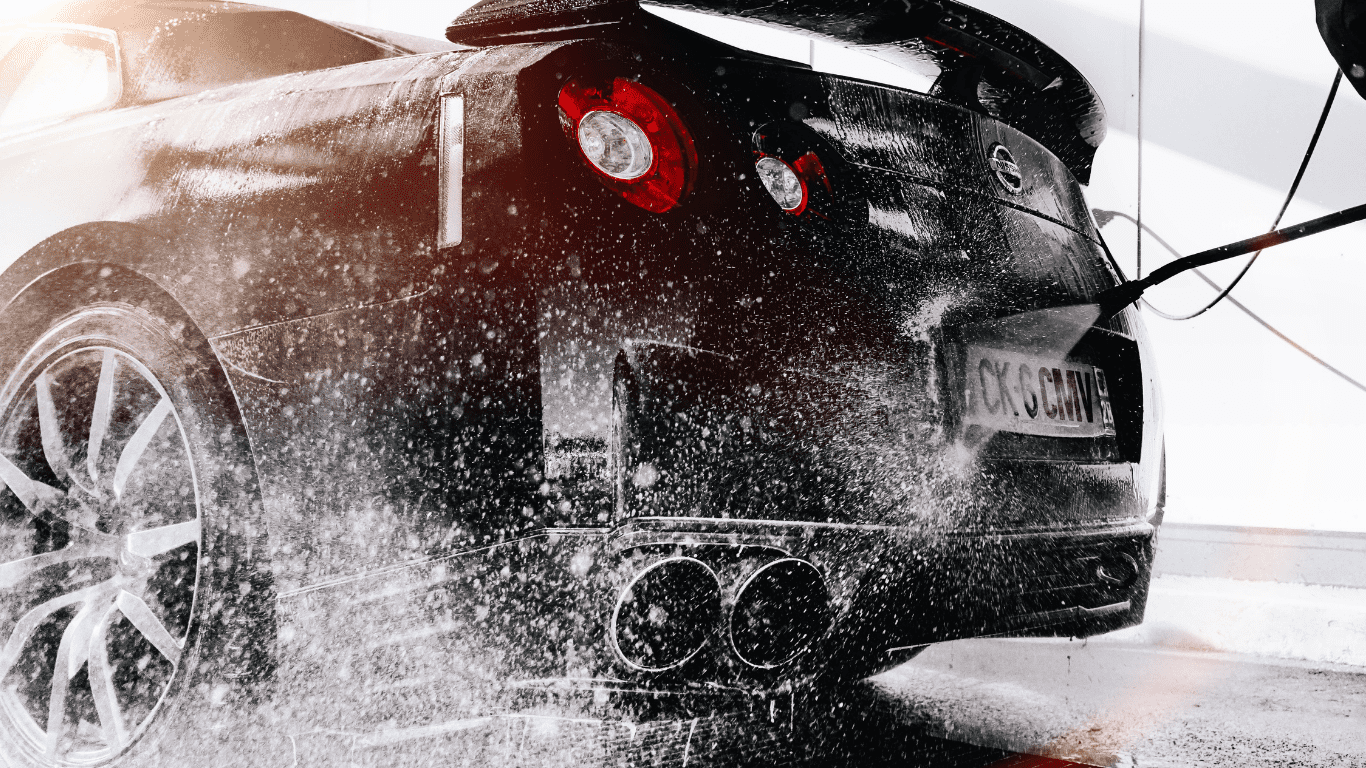
Ever peeked into a friend’s spotless ride and felt envy? Same. Try this: 1) Vacuum like you’re hunting for lost treasure, 2) Wipe surfaces with a mix of water and vinegar (natural and cheap), 3) Hit the exterior with a foam cannon or old-school sponge. Takes 30 minutes, tops. Bonus: A clean car actually drives smoother—less drag from dirt, better MPG.
Still sweating it? Grab a portable vacuum ($30 on Amazon) and keep it in your trunk. Quick post-road-trip cleanups? No big deal. And if you’re really pressed for time, focus on high-traffic zones: steering wheel, gear shift, and door handles. Your car’s not a museum—keep it functional, not flawless. Mic drop.
Plan a Road Trip
Tired of scrolling through the same weekend plans? Grab your crew (or just your dog) and map out a spontaneous road trip to hidden gems under 3 hours away. Start by stalking Insta or TikTok for quirky spots—think waterfall hikes, vintage flea markets, or that retro diner with insane milkshakes. Jot down 5-6 must-sees, then slide into your group chat like, “Who’s down for a sunrise hike and tacos by noon?” Boom—you’ve got a vibe.
Plot your route like a pro. Use Google Maps to pin stops, but leave room for detours—that roadside fruit stand with “World’s Best Peach Cobbler” won’t show up on any algorithm. Research local eats: BBQ joints with lines out the door, coffee shops roasting beans in-house, or bakeries that’ve been family-run since 1992. Sneak in a history nugget, like “Did you know this bridge was built by llamas?” (Okay, maybe not—but you get it).
Pack snacks, chargers, and a sick playlist. Lock in a return time so you’re not crawling home at 2 a.m. with empty gas tanks. Snap pics for your travel guide—highlight that artsy mural alley, the haunted bookstore, and the ice cream spot with 40+ flavors. Throw in tips like “Park behind the museum for free” or “Skip Saturdays—tourist chaos.” Share it online, and bam—you’re the local hero your followers never knew they needed. Mic drop.
Drive safely on the roads
Ever shrugged off checking your blind spot?For real—driving’s wilder than you think. Back in 2015, over 35,000 lives were lost in crashes—one person every 12 minutes. It’s the top cause of accidental death in the U.S., and even if you’re a “careful” driver, those stats don’t care. Your daily commute? It’s a high-stakes game where speed, distractions, and luck collide. But chill—you’ve got this. Nail basics like signaling early, keeping distance (no tailgating, please), and ditching the phone. New car? Learn its quirks—ABS, lane assist, whatever. Your life’s literally riding on it.

Road trips = epic memories, but… Stuff goes sideways. Pack double the water you think you’ll need—heatwaves don’t play. Throw in non-perishable snacks (jerky, trail mix) because roadside diners can vanish like mirages. Toss blankets and layers in the trunk; weather flips faster than a TikTok trend. And always stash cash—some gas stations still live in the ’90s. Pro tip: Download offline maps. Getting lost in dead zones? Sucks.

Plan for the “oh crap” moments. Gas gauge on E? Keep a jerrycan (empty—safety first). Broke down? AAA membership or a portable jumper are lifesavers. Budget tight? Apps like GasBuddy find cheap fuel, and roadside assistance plans cost less than two Starbucks runs a month. Still nervous? Practice changing a tire at home—no shame in needing YouTube’s help.
Your car’s not a superhero. Tires bald? Brakes squeaking? Fix ’em before that cross-country drive. Check oil, coolant, and wiper fluid weekly—it’s 5 minutes vs. a $500 tow. Rotate tires every 5,000-7,000 miles (stick a Post-It on your dash). And if your “check engine” light glows? Don’t ignore it—it’s not décor.

Mindset matters. Driving tired? As risky as drunk driving. Pull over, nap, chug coffee—whatever works. Spot aggressive drivers? Let ’em pass—your ego’s not worth a fender bender. And hey, if you’re teaching a teen to drive, drill this: “Assume everyone else is clueless.” Mic drop. Stay sharp, stay prepped, and keep those playlists bumpin’.
Music For Road Trip or Travel
Ever cranked the volume on a never-ending highway only to realize your playlist’s drier than gas station coffee? Let’s fix that. Pink Floyd’s Delicate Sound of Thunder—recorded live in 1988—is pure road trip gold. Imagine “Comfortably Numb” echoing through rolling hills as the sunset hits. This album’s not just music—it’s a vibe. Perfect for when you want to zone out but still feel every guitar riff in your soul. Pro tip: Sync it with a stretch of open road, and thank me later.

Not into top 40 or twangy tunes? No big deal. Amazon Music Unlimited’s got over 75 million tracks—yes, 75 million—to match your niche obsession, whether it’s Mongolian throat singing or synthwave. Create a playlist called “Hyped for Asphalt” or “Chill Cruisin’,” and let the algorithm surprise you. For real, there’s a song for every mood: windows-down anthems, midnight drive ambience, even toddler-approved jams if you’re hauling tiny backseat critics.
Still skeptical? Blast “Learning to Fly” from Delicate Sound and try not to feel like the main character of your adventure. Pair it with Amazon’s endless library to dodge playlist burnout. Lost signal? Download your faves offline. Road trips are about the journey, but killer tunes? They’re the glue holding your sanity together. Mic drop. Now go curate that perfect drive soundtrack. 🎸
Audiobooks For Road Trip
Ever zone out halfway through a highway stretch, craving more than just another playlist loop? Audiobooks are your road trip hero—they keep your brain buzzing without gluing your eyes to a page. But—pick wisely. Aim for 4 to 15-hour gems that grip you like a thriller, not lull you into a snoozefest. Imagine blasting through Nevada desert while a gritty narrator spills CIA secrets, or laughing your way through a comedian’s memoir as cornfields blur by. That’s the vibe.
Music’s cool, but audiobooks? They’re exploding—over 75 million folks tuned in last year, and drivers are leading the charge. Why? You get epic stories and keep your eyes on the road. Skip the paperback squint-fest and the “same 10 songs” rut. Instead, dive into a 24-hour fantasy saga or a bite-sized true crime episode. Pro tip: Match the book’s vibe to your route—cosy mysteries for rainy mountain drives, adrenaline-pumped sci-fi for midnight interstates.

Downloading’s a breeze. Hit up Audible for unlimited access (their free trial’s legit), or snag single titles from publishers like Penguin Random House. Prefer indie? Libro.fm supports local bookstores. No Wi-Fi? No sweat—pre-download your picks. Just avoid overly complex plots during traffic jams (cough Tolstoy cough). Stick to punchy narrators and crisp pacing.
Maximize your listen: Adjust playback speed to 1.25x if the narrator’s dragging, or rewind when scenery steals your attention. Mix genres—pair a heavy history book with a Amazon-com chaser. And hey, if the kids are onboard, cue up Harry Potter—it’s like magic for backseat meltdowns. Boom. Suddenly, that 8-hour drive feels like a front-row ticket to another world. 🎧
Road Trip Essentials
Ever dreamt of a road trip where everything clicks—no backseat meltdowns, no missed exits? Let’s ditch the “winging it” approach. Start by geeking out on Google Maps—pin those quirky roadside attractions, epic overlooks, and diners with 5-star pie reviews. Dive deeper: Check if that “world’s largest ball of yarn” is open on Tuesdays or if the indie coffee shop has oat milk. Pro tip: Bookmark everything in a shared doc so your co-pilot can hype-edit while you drive.
Food stops can make or break a trip. Kids in tow? Scope out spots with chicken nugget menus and decent lattes—trust me. Apps like Yelp or Roadtrippers filter family-friendly joints, but pack double the snacks you think you’ll need. Goldfish crackers? Legit currency for tantrums. And hey, if you spot a taco truck with a line around the block, swerve—spontaneity beats rigid plans.
Slowing down > speed-running. Trying to cram 10 states in 5 days? Nice try. Focus on 3-4 highlights max. Example: A coastal route with lighthouse tours, tide-pooling breaks, and sunset seafood feasts. Let the journey breathe—pull over for wildflower fields or that retro gas station with ’80s arcade games. For real, the unplanned detours? Those become the “remember when…” stories.
Safety’s boring until it’s not. Upgrade from “meh” to “heck yes” with comfy seatbelt pads (goodbye, neck chafing), spill-proof cup holders, and a dedicated trash bag. For littles, test booster seats before departure—nobody wants a mid-drive adjustment. Toss in a roadside kit: jumper cables, flashlight, and a charged power bank. Suddenly, that 8-hour drive feels less like survival mode and more like…vacation. 🚗💨
Related Topic: what you must bring on a road trip
A List of Items For Survival On a Road Trip
Ever been stranded with a busted tire and zero cell service? Let’s talk survival kit must-haves. First up: a first aid kit—not just band-aids and gauze. Toss in painkillers, allergy meds, and antiseptic wipes. Road rash from a hike? No big deal. Got a 10-hour drive planned? Upgrade to a trauma kit with splints and burn gel. Trust me, you’ll sleep better knowing it’s stashed under the seat.
Tire drama’s inevitable. A portable tire inflator (the electric kind with multiple nozzles) and a jack are lifesavers. Pair ’em with a spare tire—yes, even if yours is buried under luggage. Check the spare’s pressure every oil change. Pro tip: Practice changing a tire at home. YouTube it if you’re clueless—no shame*.
Phone dead? Game over. A portable charger that juices your phone 3+ times is clutch. Splurge on solar-powered ones for real emergencies. Keep it charged and tethered to your keys—so you’re not digging through the glovebox mid-panic.
Wrenches aren’t just for mechanics. A basic wrench set fixes loose bolts, bike racks, or even a wobbly car seat. Skip the fancy 200kits—∗200kits—∗30* gets you covered. Toss in zip ties and duct tape for MacGyver-level fixes.
Kids or pets? RIP car interior. Heavy-duty car mats catch spills, mud, and mystery goo. Opt for rubber ones—they hose off easily. Pair with a mini vacuum ($40 on Amazon) to suck up crumbs before they fossilize.
Bonus level: Stash a blanket, non-perishable snacks, and $20 cash in a waterproof pouch. Heat wave? Blizzard? You’re covered. For real, this kit turns “disaster” into “minor delay.” Now go build yours—before the next road trip. 🚗💨
Cargo Carriers For A Road Trip
Soft Roof-mounted Cargo Bags
Ever wrestled with a floppy cargo bag that’s spilling socks and snacks everywhere? Soft cargo bags are legit lifesavers for road trips—those multiple pockets keep toys, snacks, and extra layers sorted without the Tetris stress. But here’s the catch: don’t treat ‘em like a trash compactor. Overstuffing = instant regret when you’re digging for wipes at a rest stop. Start by tossing bulky stuff (blankets, sleeping bags) at the bottom, not heavy gear. Save the weight for a separate duffel—your future back will thank you.
Top layer hack? Stash kid-friendly must-haves (snacks, tablets, that one stuffie) where you can grab ‘em fast. Use side pockets for sanitizer, chargers, or a mini first-aid kit. First time? No big deal—do a trial pack at home. Dump it out, rearrange, and tweak. Pro tip: Roll clothes instead of folding—saves space and wrinkles. Still messy? How’s that working out? Toss in a few compression cubes for tiny items. Boom—suddenly, you’re the Marie Kondo of road trips. 🚗✨
HardShell Roof-mounted Cargo Boxes
Ever spotted those sleek plastic boxes strapped to car roofs? Those are hardshell cargo carriers—game-changers for road trips, camping, or hauling gear like kayaks or golf bags. They clamp onto roof racks, turning dead space into bonus storage. But before you impulse-buy, check if your roof rack’s compatible—not all clamps fit all cars. Pro tip: Measure your rack’s width and crossbars. A mismatched box? Sucks to realize mid-install.
What’s inside matters. Planning to stuff skis, tents, or bulky luggage? Opt for a long, narrow box. Need width for coolers or duffels? Go short and wide. Our size guide breaks it down: 12-22 cubic feet options, weatherproof seals, and lockable latches. For real, nothing ruins a trip faster than soggy sleeping bags or a busted latch on the highway.
Still overwhelmed? Peek at your usual haul. Weekend camper? A 16-cu-ft box fits tents, chairs, and a grill. Golf junkie? Slim profiles keep clubs secure without hogging roof space. And hey, if you’re that person with a rooftop Christmas tree every year—yes, we see you—prioritize durability. Boom. Suddenly, your roof’s the MVP of every adventure. 🚗✨
Related Topic: How to choose a cargo box?
Hitch Mounted Cargo Boxes
Ever tried stuffing skis into a sedan? No dice. A hitch cargo box solves that—strap it to your vehicle’s rear, load it with luggage, snowboards, or even a mini-fridge for tailgates. Bonus: Many come with built-in locks to deter grab-and-dash bandits. Winter warrior? These boxes handle icy gear without hogging cabin space. Just ensure it clicks snugly into your hitch receiver—no wobbly rides allowed.
Hauling 4 bikes? A hitch-mounted rack is your MVP. Steel ones are tank-tough but heavy; aluminum’s lighter but pricier. Check your hitch class (I, II, or III)—some racks need beefier setups. For real, nothing’s worse than a rack buckling under your 30-lb e-bike. Pro tip: Fold-down models let you access the trunk without unloading everything—genius.
SUV or van? Go roof racks with dual tracks—they’re 4-bike slayers. Locking mechanisms keep thieves at bay, and towers adjust to fit fat tires or kid-sized bikes. But heads up: Lifting bikes overhead gets old fast. Pair it with a hoist or recruit a tall friend. How’s that for teamwork?
Spare tire mounts are unsung heroes for off-roaders. Bolt ’em to your hitch rack, and they cradle the tire without blocking taillights. Some swing away for trunk access—no grunt work required. Just match the mount’s bolt pattern to your tire. Boom—suddenly, your ride’s ready for any adventure, paved or wild. 🚲✨
Ever tried cramming 5 bikes onto a 1 ¼” hitch? Wild, right? Hitch racks come in all sizes—2-bike for quick trail runs, 4-bike for family rides, even 5-bike beasts if your hitch can handle it. But here’s the catch: bigger isn’t always better. A 2” hitch gives sturdier support for 4 bikes, while 1 ¼” might wobble under that load. Rear-mounted racks? Nice try—hoisting bikes over your head to squeeze into the trunk is a shoulder workout nobody signed up for.
Storage headaches? Foldable racks are gold if your garage is already a Tetris board. Look for ones that collapse flat or hang on walls. Pro tip: Test how smoothly it folds before buying—some feel like solving a Rubik’s cube. And if you’re that person who forgets the rack’s on the car, get a model with a tilt feature. Boom—trunk access without unloading all the bikes. How’s that for a space hack?
Will your bike even fit? For real, don’t guess. Haul your ride to the store—check if the rack grips fat tires, disc brakes, or kid-sized frames without drama. No time? Peek reviews for your bike model. Hate returns? Same. Avoid racks with flimsy straps or tight spacing—your bike deserves better than a death grip. Mic drop. Now go conquer the road. 🚴♂️✨
Conclusion
Ever tried herding a group of kids, cousins, and a golden retriever into separate cars? No thanks. Start by nailing your trip’s timeline. Weekend warrior? Book one hotel night and keep it chill—no need to cram 10 states into 48 hours. Going full 7-day explorer? An RV rental’s legit genius. You’ll have beds, a kitchenette, and space for Fido (no sad puppy eyes left behind). For real, RVs let you roll at your own pace—pull over for that weird roadside dinosaur statue or nap while someone else drives.
Big crew? RVs keep everyone under one roof—no “where’s Aunt Karen?!” panic. Swap drivers easily, stash snacks for days, and let the introverts recharge in the back. Bonus: No hotel check-ins or lost Ubers. But if you’re rolling with just your partner or a tiny squad, a rental car’s way nimbler. Split up for hike vs. spa days, or stick together for impromptu diner stops. No grunt work coordinating meetup spots.
Still stuck? How’s this: RVs = comfort + togetherness, cars = freedom + spontaneity. Test drive both vibes with a 3-day trial—rent an RV for a weekend, then a sedan for a day trip. Pro tip: Apps like RVshare or Turo let you compare prices and styles without dealership pressure. Boom—suddenly, road trip planning feels less like logistics hell and more like…vacation mode. 🚐✨
Our team is creating outdoor-gear relevant articles with passion. If our articles can help you to find the correct solutions for your questions, we will be happy about that. In the content creation process, we usually collect accurate and useful information online or offline to compile our content in an organized way. Consequently, we can guarantee that you can discover some expected answers to your questions. We appreciate your time on our site.

